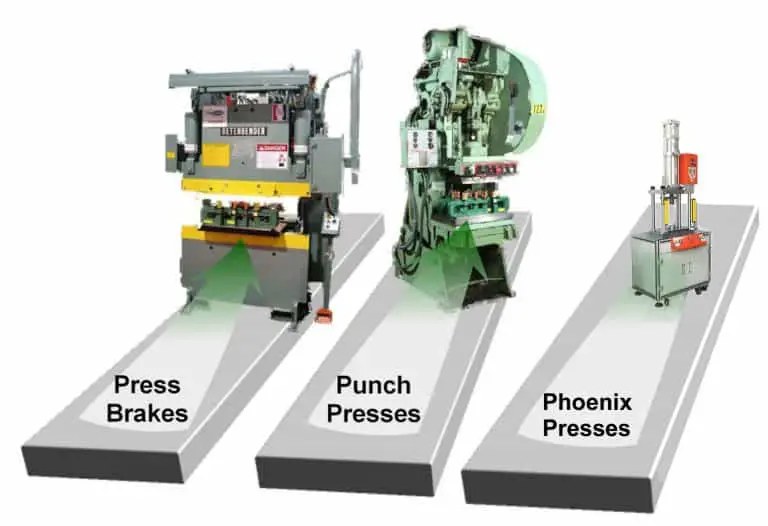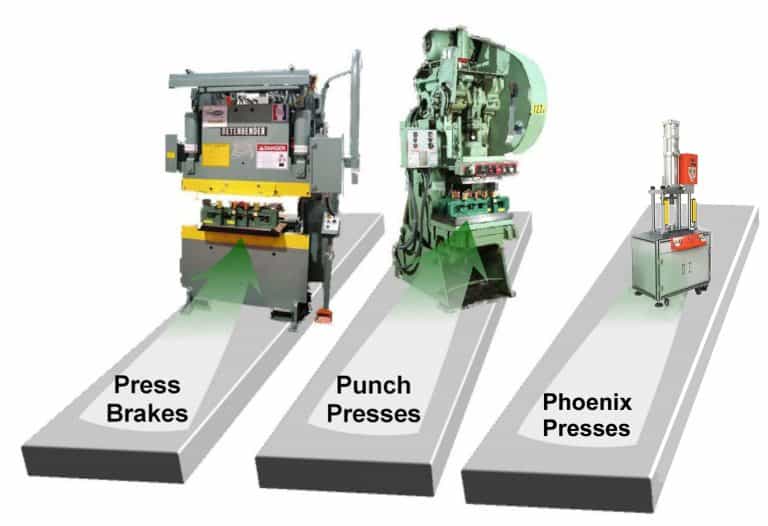Die sets are installed in sheet metal panels either individually or as part of a press line. On the basis of tonnage, press parallelism, shut height, nitrogen pressure in dies, counterbalance pressure, and press speed, metal punch press dies and presses can have a variety of input variables. These factors can have an impact on the stamping panel's quality, especially during die setup. By swapping out one set of dies for another, the same stamping press can be reused.
Typically, a punch press or piece of equipment is made up of two tool pieces. The support for the punches is one of these components. Dies are another component of the punch press. Furthermore, as previously stated, the interaction of the punch and the punching die frequently results in holes.
What are the Uses of Metal Punch Press Dies?
Drawing, shearing, and bending are the three basic die operations. Metal sheets are inserted in a die or press tool with a properly designed chamber that delivers the desired shape to the metal sheet in metal stamping. The press slide connects to the upper section of the die, while the press bed connects to the lower part. The metal sheet is pushed through the die by a component called as the punch, which performs the actual shaping action. The die patterns can be used to emboss or create three-dimensional letters on the finished product.
Punching through workpieces can produce excellent results if the punch press and punch tool are of good quality. Die setup is the process of placing dies in a press. Die setup determines the binder force and shut height. A batch is the number of components generated in a die configuration. The following are some suggestions to help them improve their performance and longevity.
Types of Metal Punch Press Dies
- Progressive Punch Press Dies
A series of stamping stations is used in progressive die stamping. With progressive stamping dies, a metal coil is fed into a reciprocating stamping press. The die moves with the press and shuts when the press moves down, stamping the metal and forming the part. The metal advances horizontally to the next station as the press moves up.
The final station is where the freshly produced portion is separated from the remainder of the metal. Because the dies last a long time without becoming damaged and the procedure is very repeatable, metal punch press dies is perfect for large batches. Each step in the process cuts, bends, or punches the metal in a different way, gradually acquiring the desired end-product shape and pattern.
- Transfer Punch Press Dies
Transfer metal punch press dies is identical to progressive die stamping, except that the part is withdrawn from the metal trip early in the process and transported from one stamping station to the next by a mechanical transport system, such as a conveyor belt. This method is typically utilized on larger items that may need to be moved between presses.
- Four-Slide Press Dies
Multi-slide or four-way stamping is another name for four-slide stamping. This method is great for creating intricate components with a lot of bends and twists. Instead of one vertical slide, it uses four sliding tools to shape the work piece through numerous deformations.
No metal punch press dies are used, and the work piece is shaped horizontally by two slides, or rams. More than four moving slides can be used in multi-slide stamping. Because different tools can be linked to each slide, four-slide stamping is an extremely versatile method of stamping. It also has a low cost and a quick production time.
- Fine Blanking
Fine blanking, also known as fine-edge blanking is useful for achieving high precision and clean edges. Fine blanking procedures are usually performed on a hydraulic or mechanical press, or a combination of the two, and consist of three separate movements:
Because fine blanking presses run at higher pressures than traditional stamping presses, equipment and apparatus must be constructed to accommodate these higher operating pressures.
Conclusion
Metal punch press dies are the equipment that metal stamping machines utilize to make metal stamping. Depending on the type of machine, each metal stamping machine might have one or more dies. Metal stamping machines' dies are the major components that do the actual casting, punching, cutting, and shaping of the metal sheet.








